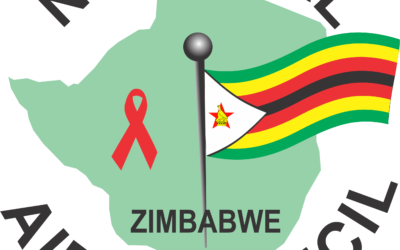
HEALTH systems are, at their core, meant to promote, restore or maintain health. Their objective is to improve the length and quality of citizens’ life from the cradle to the grave. Health is, therefore, a fundamental human right.
This was very clear to the different healthcare delivery administrators and practitioners in Zimbabwe for the last 42 years. But something happened along the way and Zimbabwe is now at the bottom of the pile.
During my tenure, from 1998 to 2002, as the director of the Institute of Continuing Health Education, a postgraduate arm of the medical school at the University of Zimbabwe, I was involved with the health system in Zimbabwe, representing the school on a joint health planning committee under the Health and Child Welfare ministry.
I was also chairperson of the National Medicines and Therapeutics Advisory Committee, which used to take stock of the availability of medicines. I also served as deputy chairperson of the Medicines Control Authority of Zimbabwe.
My involvement has continued in the form of teaching students at one of the country’s medical schools.
During the early years, 1980 to about 1990, things were moving.
In 1980, after independence, the Zimbabwean government set about addressing the inequities of a system imposed during the colonial period. Prior to independence, healthcare catered primarily for colonial administrators and expatriates. Africans got separate or second-class provision.
The new government sought to replace this with the concept of equity in health and primary healthcare. The noble idea was to distribute health between individuals and to invest in health wisely and effectively. Zimbabwe also joined the World Health Organisation and followed its recommendations to the letter.
- Mavhunga puts DeMbare into Chibuku quarterfinals
- Bulls to charge into Zimbabwe gold stocks
- Ndiraya concerned as goals dry up
- Letters: How solar power is transforming African farms
Keep Reading
But by the turn of the century, it was clear that the government had lost its way when it came to healthcare. And there has been a marked deterioration ever since.
Zimbabwe’s current system fails in three respects which are key to any healthcare system: policy, people and funding.
The result is it is unable to deliver the most basic care. There’s a lack of medicines and functioning hospital equipment. It is also a system devoid of empathy. Zimbabweans believe that one goes to hospital to die, not to have one’s health restored.
The health system in Zimbabwe is, to all intents and purposes, now in the intensive care unit. The future is bleak unless there are serious long-term reforms to build resilience.
What went wrong?
There have been several distinct phases in the development of Zimbabwe’s healthcare system since 1980.
The first phase, between 1981 and 1989, was a period of redistribution without growth in productivity. There was an impressive expansion in social services, using aid funds.
Indeed, some health services were free, for example, maternal and child health. The private sector also contributed to healthcare provision. For example, industry paid an HIV/Aids levy.
The second phase, between 1990 and 1997, was a period of economic stagnation. Many people were unemployed and as a result the tax base shrank. Little money was available to the fiscus.
The health budget began to be cut, affecting the quality of services. Households had to pay for some health services out of their pocket.
The third phase, between 1998 and 2008, saw a further contraction of the economy. People began to be laid off in larger numbers. What had already started got worse.
Government officials from the very top began to go outside the country for treatment.
The phase of 2009-2013 was a period of stabilisation of the socio-economic situation in the country because a government of national unity was established. During this period, funds, some of which were allocated to the health system, began to flow into the country.
But 2013 to date has been the blame game period. There has been — and continues to be — an exodus of healthcare professionals to greener pastures. The consequence has been poor service at health facilities.
Policy, people and funding
Policy: In the 1980s, the government sought to put in place a healthcare policy that benefited all Zimbabweans.
For example, investment in primary healthcare infrastructure (clinics and health centres) resulted in 85% of the population being within one hour’s travel time to the nearest health facility.
But, over time, health policy and strategic plans for health became increasingly donor-funded. Implementation often reflected the agenda of donors.
Some private sector companies came on board. For example, the National Health Trust was set up by Econet, the biggest mobile telecommunications company in Zimbabwe. I chaired the trust between 2006 and 2011. The aim of the trust was to argue whatever the government was doing. It wasn’t to watch the government fold its arms and let the private sector do everything.
People: A great many doctors, nurses and other healthcare professionals have emigrated. In 2006, a report produced by Dr Lovemore Mbengeranwa painted a bleak picture. It found that there had been an unprecedented staff exodus and that there was low morale among those remaining, ineffectiveness of the referral system, ill-equipped training schools, shortage of tutors, lack of equipment, skilled personnel, poor remuneration and lack of accommodation.
There has also been inadequate funding for the health sector over the past few years and shortages of essential drugs, including antiretrovirals.
The situation has continued on a downward path. Those who stay are incapacitated. When they attempt to focus on providing basic care, they appear to have no one to listen to them.
Funding: In the first decades after independence, health was put at the forefront of development. This was underscored at the continental level.
The Abuja Declaration, signed in 2001, saw member States pledge to allocate at least 15% of their national budgets each year to improving their healthcare systems.
Zimbabwe has failed to come close to meeting this target. Health expenditure increased steadily in the first decade after independence to reach 3,1% of GDP and 6.2% of government expenditure — or US$23,60 per capita — in 1990-91.
But spending as a percentage of GDP has gone down. And by 2000, per capita health financing stood at US$8,55. At the beginning of 2008, it stood at only US$0,19.
Since the Abuja Declaration in 2001, it has improved slightly but is still behind in meeting the 15% threshhold. Today in Zimbabwe, health insurance covers less than 10% of the population.
Over 39% of all health expenditure is out of pocket, leading to financial impoverishment for many people.
Next steps
I believe it’s still possible to provide universal health coverage in Zimbabwe. The country has the basic foundations in place. It has the brain power — locally and in the diaspora. What needs addressing is the socio-economic and political environment to make it conducive for health professionals to return.
Zimbabwe also has natural resources such as diamonds, gold, platinum, lithium,oil and maybe soon gas. All can be mobilised to provide the required financial resources to strengthen the health system for future generations.
- Norman Nyazema is a professor and research associate in health at University of Limpopo, South Africa






